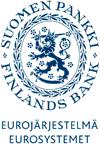 Research Discussion Papers, Bank of Finland
Research Discussion Papers, Bank of Finland
No 32/2006:
Finnish consumers' expectations on developments and changes in payment habits. Survey in connection with the research project 'Finnish payment habits 2010'
Tomi Dahlberg and Anssi Öörni
Abstract: The Bank of Finland’s Finnish Payment Habits 2010 project
predicts that Finnish payment habits will face substantial changes. The
causes for these changes include: the standardisation and integration of
European payment systems, development of payment services-related
legislation and regulation at EU level, changes in payment services-related
cost factors and pricing, and new opportunities offered by technological
advances. The last few years have seen a surge in new payment instruments
and services. Increasing reliance on information and communication
technology is characteristic to the development of these payment
instruments, the vast majority of which have however failed to entice
consumers. To increase our understanding of changes in payment patterns,
this report analyses consumer needs, tastes and payment habits as new
payment systems are adopted.
Research data was collected in September
2005 using a mail-survey covering the central payment methods and addressed
to 2,000 randomly-sampled Finnish consumers. According to our findings,
security and trustworthiness are the most important characteristics of any
new payment instrument. Other essential characteristics are the ability to
produce good transaction-related information, compatibility with shopping
and payment habits, accessibility, ease of use, time and cost savings, as
well as time and place independence. New payment instruments – electronic
billing and paying for shopping by mobile phone – are not likely to
supersede conventional payment methods by 2010 when judged by the
aforementioned characteristics: Trust and cost factors do not separate
consumers well-disposed towards electronic bills and mobile payments from
those set against these payment methods. A relatively restricted group of
differentiating factors was found. Ease of use is a common differentiating
factor for both electronic bills and mobile payments adoption.
Additionally, accessibility is a differentiating characteristic in mobile
payments adoption.
Keywords: payment habits; payment services to consumers; consumer behaviour; diffusion of innovations; theory of planned behaviour (TPB); (follow links to similar papers)
JEL-Codes: A14; D14; L81; O33; (follow links to similar papers)
107 pages, December 12, 2006
Before downloading any of the electronic versions below
you should read our statement on
copyright.
Download GhostScript
for viewing Postscript files and the
Acrobat Reader for viewing and printing pdf files.
Full text versions of the paper:
0632netti.pdf 
Download Statistics
Questions (including download problems) about the papers in this series should be directed to Minna Nyman ()
Report other problems with accessing this service to Sune Karlsson ()
or Helena Lundin ().
Programing by
Design by Joachim Ekebom
 Research Discussion Papers, Bank of Finland
Research Discussion Papers, Bank of Finland
 Research Discussion Papers, Bank of Finland
Research Discussion Papers, Bank of Finland